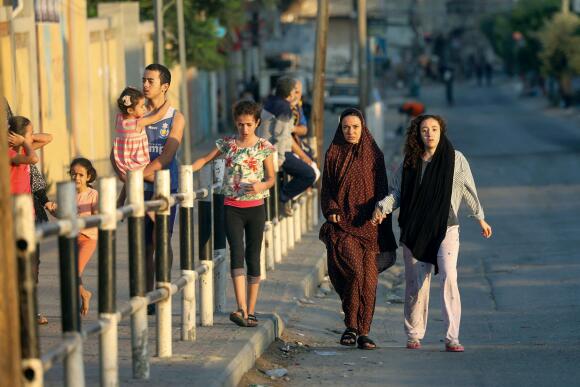“Massive displacement” of Gazans towards the south “continues”, according to the UN
Israel’s order for residents to evacuate the northern Gaza Strip led to “a massive displacement” of population towards the south of the Palestinian enclave, the UN noted this Sunday.
“Massive displacement from the north to the south of the Gaza Strip continues” since Friday, said the Office for the Coordination of Humanitarian Affairs (“Office for the Coordination of Humanitarian Affairs”or OCHA) of the UN in a press release.
“Partner humanitarian organizations report that the number of internally displaced people [de la bande de Gaza] has increased significantly over the past 24 hours. However, their exact number is unknown.adds the press release.
As of late Thursday evening, there were more than 423,000 displaced people inside the Gaza Strip. Around 64% of them were hosted by UNRWA, the UN agency responsible for supporting Palestinian refugees, in 102 locations designated as emergency shelters. More than 33,000 people “took refuge in 36 public schools”specifies the press release.
However, shelters located in the northern Gaza Strip “are no longer safe”, deplored UNRWA on Saturday. “This is an unprecedented situation” adds the UN agency, which specified Sunday that many people − “pregnant women, young children, elderly or disabled people” − would not “not able to escape”.
The situation risks being “nightmarish”especially for pregnant women, fears Dominic Allen, the representative of Palestine to the United Nations Population Fund, quoted by the American channel CNN. According to him, nearly 50,000 pregnant women, “including 5,000 who would be in their last month of pregnancy”, would be exposed to serious risks, describing a health infrastructure ” in ruins “.
“It is estimated that more than 150,000 displaced people, whose homes were damaged or destroyed or who fled in fear, have found shelter with relatives or neighbors, as well as in other public facilities”he adds.
